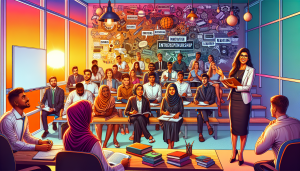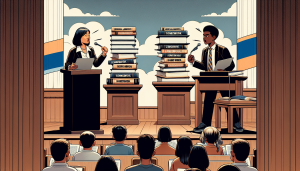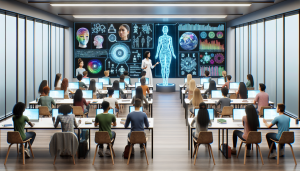Flipped Classrooms: Turning Traditional Teaching on Its Head
Flipped Classrooms: Turning Traditional Teaching on Its Head
In today’s ever-evolving educational landscape, there is a growing trend that is gaining popularity among teachers and students alike – flipped classrooms. This innovative method of teaching has been turning traditional teaching on its head, and for good reason. With the increased use of digital technology and the changing needs of students, educators are realizing the limitations of traditional teaching methods and the benefits of flipping the classroom. In this article, we will explore what exactly a flipped classroom is, how it works, and why it is revolutionizing education as we know it.
What is a flipped classroom?
A flipped classroom is a teaching model in which the typical lecture and homework elements of a traditional classroom are reversed. This means that students are introduced to new concepts and information outside of the classroom, usually through videos, readings, or other online resources. Class time is then dedicated to discussions, activities, and collaborative learning, allowing students to apply their new knowledge in a hands-on and interactive setting.
By flipping the traditional teaching structure, students are able to learn at their own pace, pause and rewind lectures, and have access to a variety of resources to support their learning. This approach also allows teachers to move away from the role of a lecturer and instead become facilitators of learning, providing individualized support and feedback to students.
How does it work?
The key element of a flipped classroom is the use of technology. Teachers create and curate educational materials, such as pre-recorded videos, slideshows, and online quizzes, which students can access through a learning management system or a class website. Students are expected to engage with these materials before coming to class, ensuring that they have a basic understanding of the topic being taught.
During class time, teachers can then focus on exploring the lesson in more depth, encouraging discussions and critical thinking, and engaging students in various activities and projects related to the topic. This approach provides a more personalized learning experience, catering to different learning styles and allowing students to take ownership of their education.
Why is it beneficial?
One of the major benefits of a flipped classroom is that it promotes active learning. By engaging with material before class, students come to class prepared and can participate in interactive activities, promoting critical thinking and collaboration.
Moreover, flipping the classroom also allows for more efficient use of class time. Instead of spending precious class time delivering a lecture, teachers can focus on relevant and engaging activities that enhance learning and deepen understanding. This approach also allows for more personalized instruction, as teachers are able to provide individualized support and feedback to students during class time.
Finally, flipped classrooms also encourage students to become independent learners. By engaging with materials outside of class, students learn to take responsibility for their own education, developing research and self-study skills that are essential for success in today’s society.
In conclusion
Flipped classrooms are an innovative teaching approach that is transforming traditional education methods. By utilizing technology and promoting active learning, this model has proven to be beneficial for both teachers and students. It allows for a more personalized and engaging learning experience, empowering students to take ownership of their education. With the ever-evolving landscape of education, it’s no question that flipped classrooms are here to stay, turning traditional teaching on its head and paving the way for a more dynamic and effective way of learning.
So if you’re an educator looking to enhance your teaching methods, consider flipping your classroom and see the positive impact it can have on your students’ learning experience.










